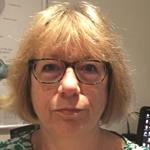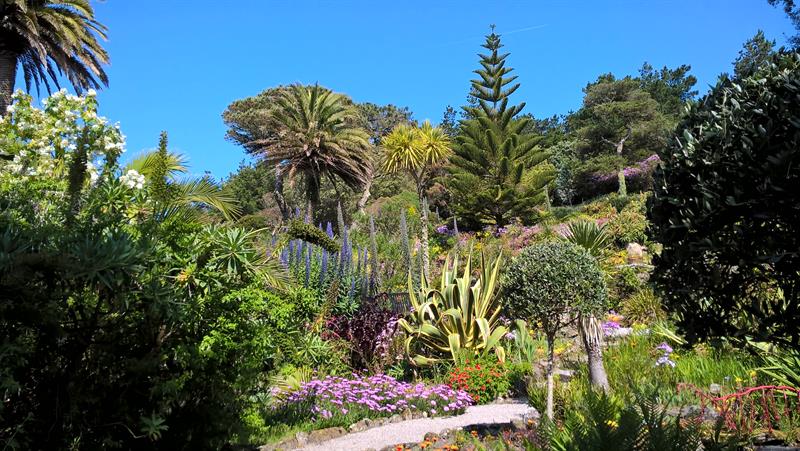The tiny granite archipelago of the Scilly Isles sits 28 miles off the Cornish coast in the Atlantic Ocean. Anyone who has visited the Isles on holiday can not help but fall in love with their tranquillity, beauty and wealth of flora, fauna and history. Its past is steeped in tales of wrecking and for many years its people made a subsistence living from fish, potatoes and cut flowers. More recently tourism has taken over as its main source of income.
Its unique setting, white sand and shimmering sea also pose its 2,200 inhabitants with some interesting optical needs. In the past those needs were met by a Penzance-based independent who visited the islands four times a year in week-long stints. More recently the service was opened up to other providers but this did not work out and the Scillies were left without an optical service.

Reynolds Opticians, which was set up in 1980 by William’s parents Juanita and Tre Reynolds, got involved when in 2012 the Primary Care Trust decided to shake up primary care provision on the Scillies, as Williams (pictured) explains. ‘In 2012 the then PCT wanted a radical overhaul of primary care provision on Scilly and the GP surgery took on a contract to provide pharmacy and optometry cover too. Initially, my practice, was subcontracted to provide the service but even with subsidised travel and accommodation we were losing money.’ She says NHS England is aware the service will continue to need subsidising.
Williams provides the service with visits every other month for three days at a time, this summer she has also flown out for a couple of single days. Luckily she does not have to take a full consulting room with her.
‘I only take my handheld kit with me such as retinoscope, ophthalmoscope, twirls and Volk lenses. A marker pen, tape measure and lens cleaner are also essential. The medical centre on St Mary’s has a fully equipped optometry room with slit lamp, visual field screener and non-contact and Goldmann tonometers, etc. There is no space for a dispensing area so I do all my own dispensing and we are fortunate to have Dunelm supply a range of frames on consignment.’
She says completed spectacles are handed over and fitted by one of the practice team but it is not always straightforward. ‘Children have to be dispensed and fitted, of course, under supervision and this is challenging to manage. There is a rotating stock of about 100 frames and this is swapped out every six months.’
The nature of the islands also shape their demographics. ‘Scilly has a resident population of about 2,200 and a significant proportion of them are over 65. It is this group that need an island-based service because of the visual problems that can be associated with ageing and because they are the least likely group to travel to the mainland,’ she says. Referrals can be difficult. ‘One ophthalmologist holds a clinic at the small hospital on Scilly every couple of months but as all surgery and the more complex tests take place on the mainland, it is sometimes easier for patients to be seen in Penzance or Truro, for which they are entitled to subsidised travel.’

The Isles are famous for their flora
For those needing correction the islands pose special conditions too due to the terrain, weather, sun and sea. ‘Nearly every glasses wearer prefers photochromic lenses and I always recommend polarised lenses in sunglasses and UV blocking lenses where available. Most people have two or three jobs so their visual tasks can be quite varied,’ adds Williams.
Once on the main island of St Mary’s her time is spent in the medical centre’s consulting room. So what is it like practising there? ‘Busy. I work a very long day, most of the patients I see are new to me and, as many are elderly, I have to spend a long time explaining why their vision is changing; the College leaflets are an absolute godsend,’ she says. It does have its charms though. ‘It’s a bit like going back 30 years but with better equipment and higher expectations. When I first started work – yes, 30 years ago – I had to do all my own dispensing and it is lovely to see a patient journey through.’

The unspoiled beauty of the Scilly Isles has made it a desirable tourist destination
In keeping with most eye care professionals it is making a difference to people’s lives by sorting out their visual problems which provides the greatest satisfaction. ‘The best bit is – as always – sorting out a problem for someone. Worst bit is having to catch the Scillonian (ferry) if the weather is too bad for the planes.’
When asked she clearly does not want to be drawn on the horrors of seasickness: ‘Don’t – just don’t,’ she replies and she never finds it hard to return to her native Cornwall. ‘Never – although the pilots do seem to compete to see who can land nearest to the beginning of the runway which can be a bit hairy.
So working in such a beautiful place has she ever been tempted to go native? ‘Good God, no,’ she says. ‘I lived in St Ives until I was 15, and have spent my life in West Cornwall. That is quite remote enough.’
